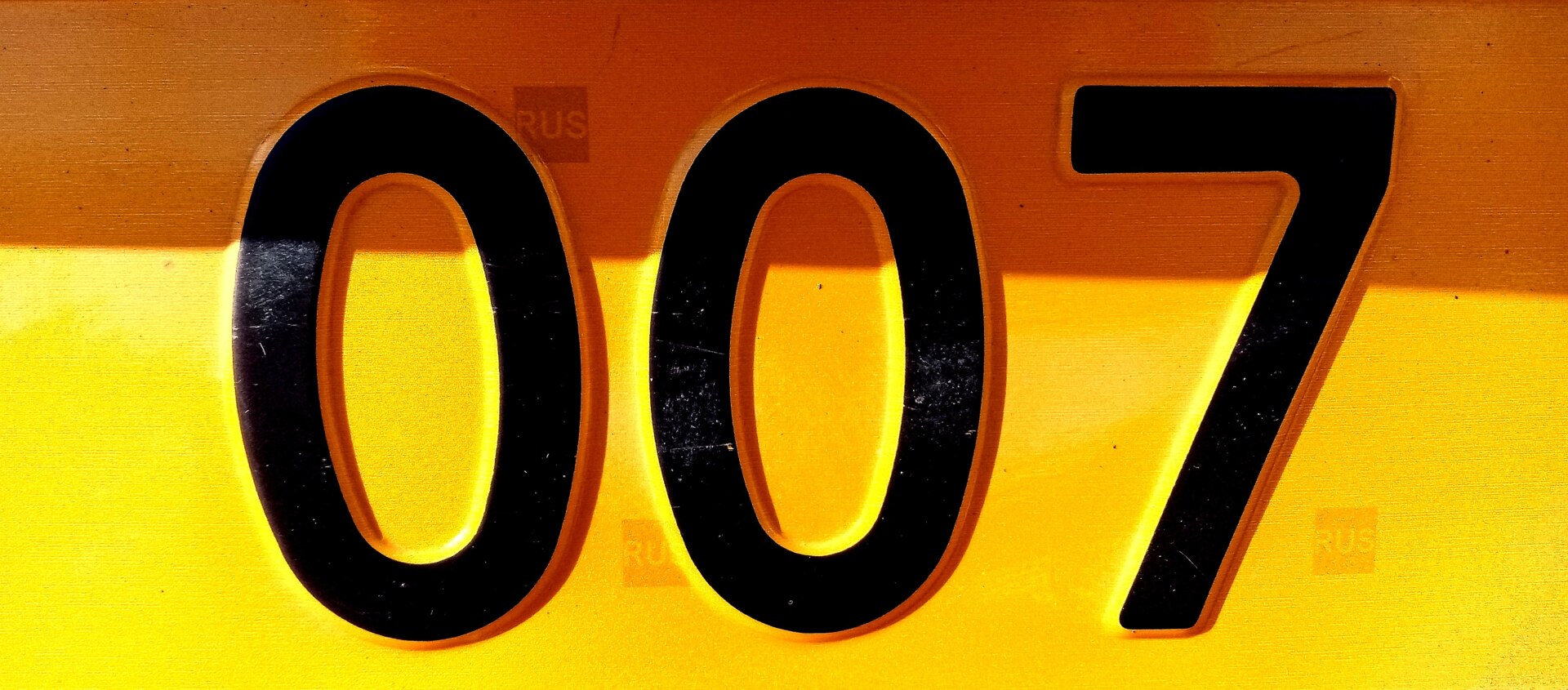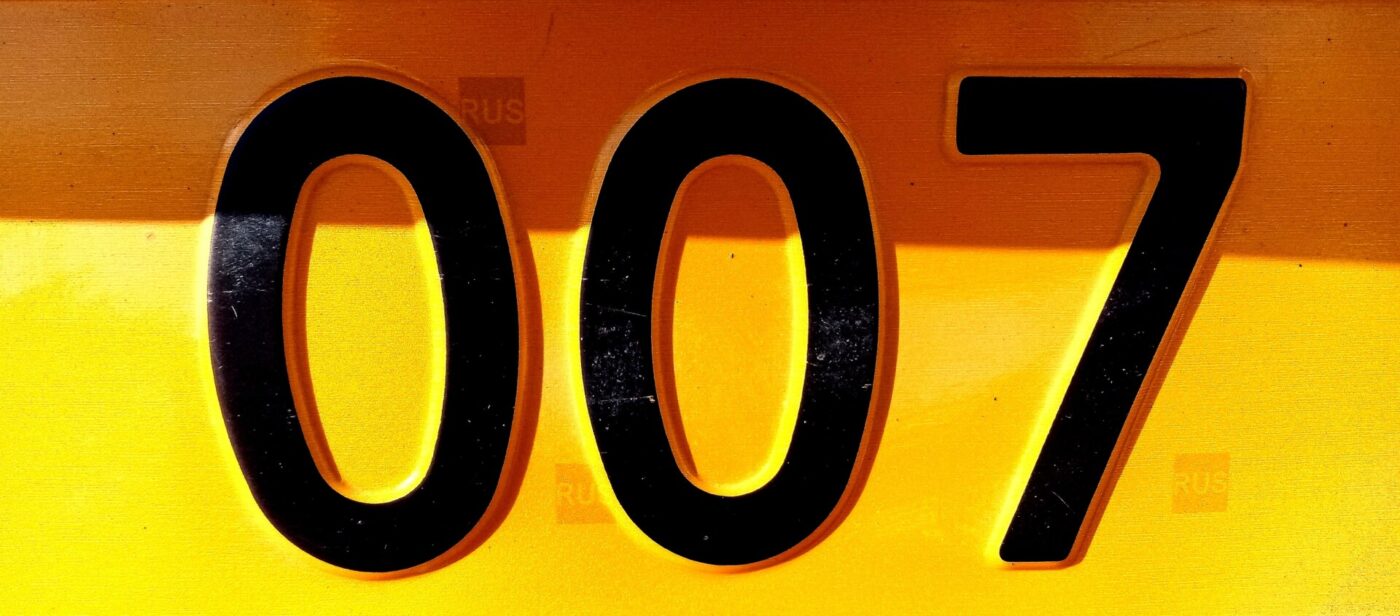From Russia With Love (1963): Venice
La Serenissima is definitely one of Bond’s favourite locations, so much so that it recurs in several 007 movies, starting with this classic from 1963, which opens and ends in Venice. In this instalment, Bond (Sean Connery) is chased by the evil organisation SPECTRE, determined to kill him after he’s defeated the villain Dr. No in the eponymous first movie of the series. Although primarily filmed in Istanbul, Turkey, the movie shows the beauty of the romantic Italian city, where 007 and the Russian defector Tatiana Romanova kiss under the Bridge of Sighs, the limestone bridge that spans the narrow canal between Doge’s Palace and the prisons, built around 1600 by architect Antonio Contino. (As the production house didn’t have a large budget for the movie, director Terence Young spent two days in Venice shooting the backgrounds, but the kissing scene was recorded in England’s Pinewood Studios.) According to the local tradition, if a couple kisses while passing underneath the bridge in a gondola, they will experience eternal love: knowing Bond, who can’t limit his curiosity for the feminine, this won’t quite hold true…
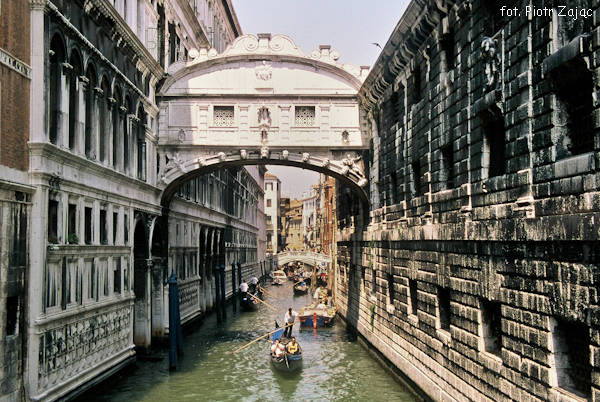
The Spy Who Loved Me (1977): Sardinia
Costa Smeralda is home to flourishing vegetation, turquoise water, white sandy beaches and… the super secret shelter of a mad scientist named Karl Stromberg, who, in the 1977 The Spy Who Loved Me, wants to conquer the world by destroying New York and Moscow (and who owns a copy of La Primavera by Botticelli in his refuge). On the island, a very smooth Bond (Roger Moore) drives a funky white Lotus Esprit, with Russian KGB agent Anya Amasova in the passenger seat, through the beautiful port of Palau (famous for Le Tombe dei Giganti, giant monuments from the Bronze Age) and stays in the famous Hotel Cala di Volpe, an iconic hotel of 60s charm, built in one of the most beautiful and idyllic bays of Costa Smeralda. The hotel was built by the renowned French architect Jacques Couëlle, who modelled the spot after a traditional Sardinian fisherman village with sinuous lines and cave-like suites with big arches and bright walls. His idea was to build a luxurious hotel in a very organic and contemporary fashion without ruining the local landscape.
But it’s the street between Olbia and Porto Cervo that really stands out in this movie, where there’s a breathtaking chase among the Mediterranean bushes, overlooking the blue water from high cliffs, in which a helicopter tails our hero’s white Lotus. Bond and Amasova escape into the sea (where the car turns into an underwater hovercraft), fight another battle (this time below the waves) and remerge at Spiaggia Capriccioli.
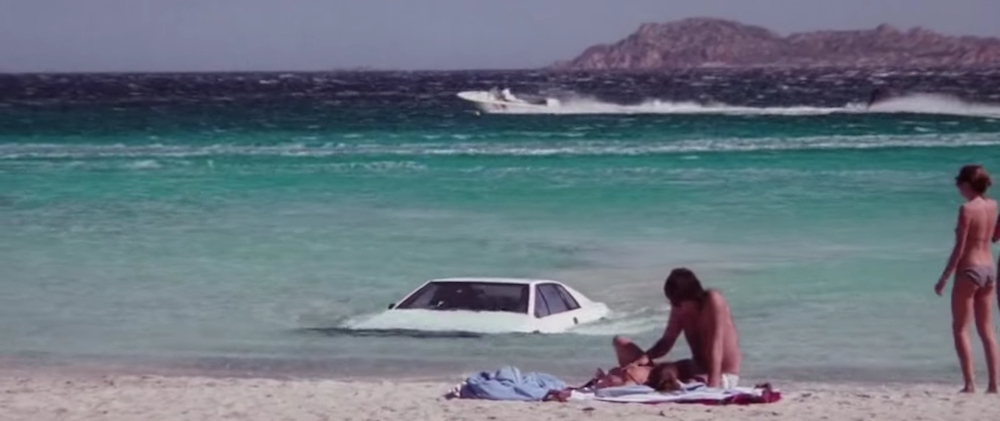
Moonraker (1979): Venice
Sixteen years after From Russia With Love, Moore is back in the lagoon with Moonraker, a cosmic, disco-inspired instalment in the franchise (I have to say it’s so kitsch and camp that it ought to be my favourite). In Moonraker, our favourite secret agent needs to defeat the super evil Hugo Drax, a millionaire who wants to control the earth by conquering space (Jeff Bezos, move aside). Notably weird, this Bond movie includes a chase on a gondola that turns into a land-capable hovercraft and escapes in Piazza San Marco. About this, actor Roger Moore allegedly noted: “There were thousands of tourists who didn’t know there was a film going on. I didn’t have that much control over it, so they eventually gave me a little horn to warn people.”
On a more serious note, the movie shows the beauty of the 17th-century Palazzo Pisani, the biggest patrician palazzo in the city, embellished with frescoes, statues, marble, decorations, stuccoes and paintings. Another iconic Venetian building that Bond visits is Ca’ Rezzonico: in the movie, home to super villain DRAX’s secret laboratory, from which Bond steals information; in real life, a baroque palace designed by architect Baldassarre Longhema in 1649, which holds paintings by Tiepolo, Canaletto and many other classic Venetian artists.
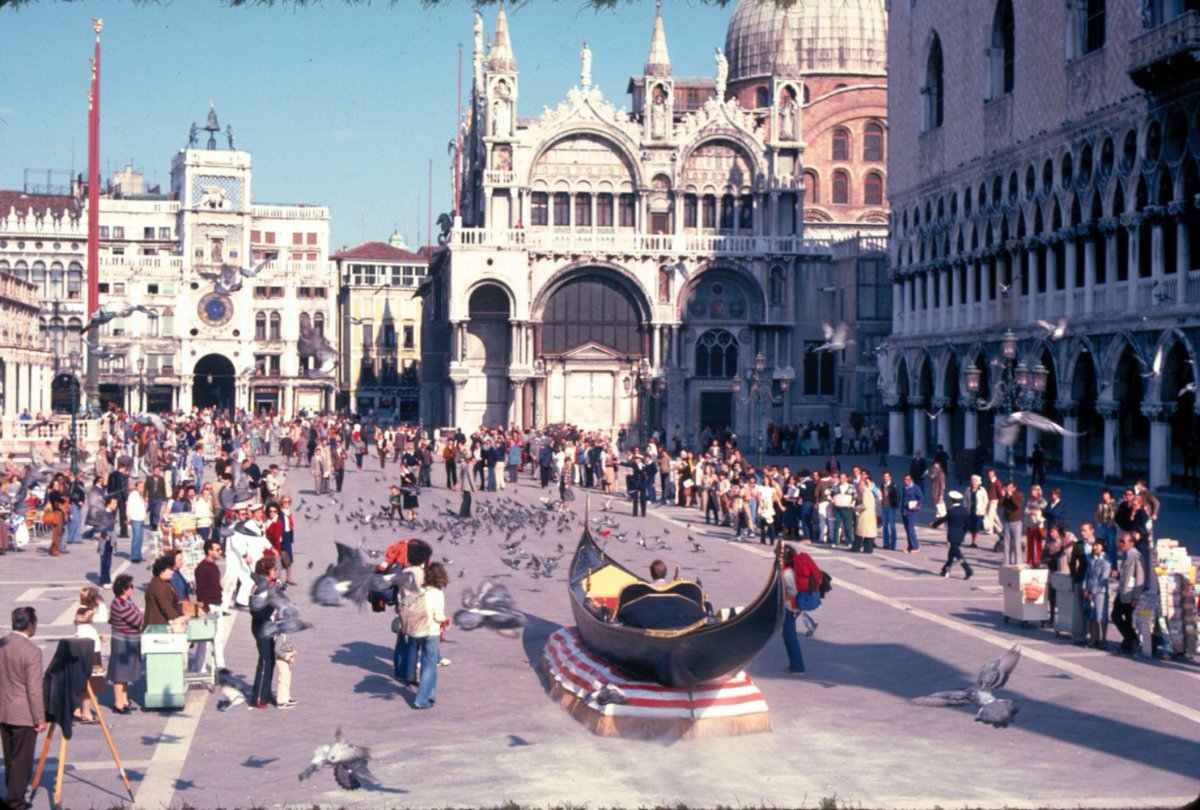
For Your Eyes Only (1981): Cortina d’Ampezzo
Although this 1981 instalment is primarily set in the lush island of Corfù, Greece, an important segment of the movie was shot in Cortina D’Ampezzo, a sophisticated village in the heart of the eastern side of the Italian Alps, which is also known as the Regina delle Dolomiti. Between the famous Miramonti Majestic Grand Hotel, the renowned Bob Bar and the Olympic Ice Stadium, For Your Eyes Only is mostly remembered for its breathtaking chase on the ski slopes, where a 007 on skis is chased by motorbike-riding villains.
All the glamour of 1980s Cortina is perfectly represented by Bond (Moore) driving his Lotus through the snow with spectacular shots of the Alps in the background while a funky soundtrack plays over the images of retro futuristic buildings. At the time, Cortina was a status symbol, where wealthy northern Italians used to go skiing and spend the famous Settimana Bianca. Part of the charm of this little town is due in part to the 1956 winter Olympics, which will be hosted there again in 2026.
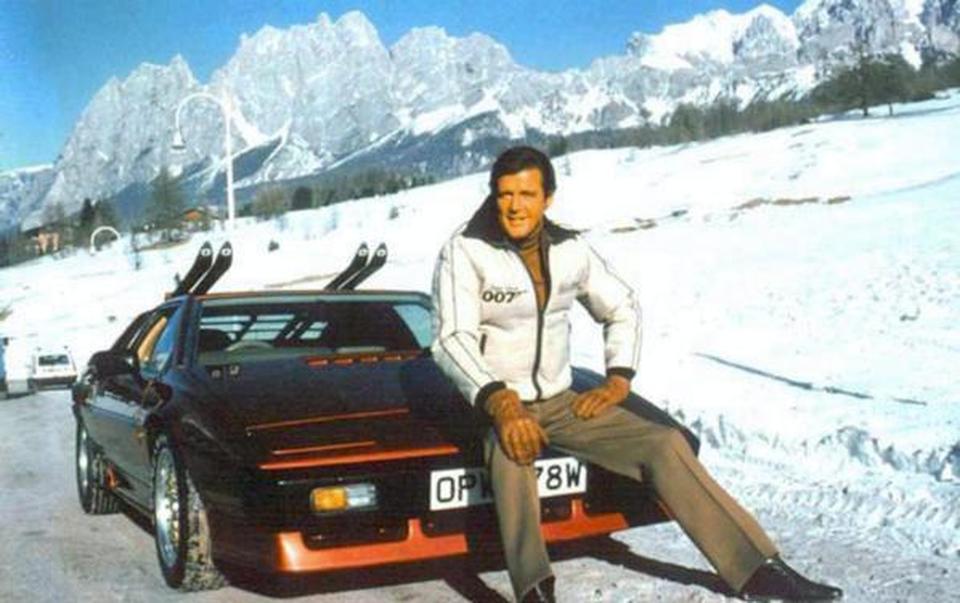
Casino Royale (2006): Lake Como and Venice
It is with Daniel Craig that James Bond returns to Italy after 25 years–this time, to Lake Como and Venice. In this gem of an action movie, our secret agent is severely injured (for about three quarters of the runtime), and so he chooses to retire in the utterly stunning Villa Balbianello, an astonishing villa on the lake’s edge, built at the end of 18th century by Cardinal Angelo Maria Durini on top of a Franciscan monastery (that had been on the tip of this peninsula of Dosso d’Avedo since the 13th century). Over the last 100 years, the villa has hosted many important figures, such as patriot Silvio Pellico, the famous poet and writer Alessandro Manzoni, and Padme and Anakin (Star Wars, Episode II – Attack of the Clones was also shot here!).
The movie is largely shot in Venice, where Bond arrives on a boat with Vesper (Eva Green) and visits Piazza San Marco, the Longchamp store, and several bridges and calli (small Venetian streets), including Sotoportego del Cavalletto, Ponte di Malpaga, and Sotoportego de le Colonne. The dramatic and heart-wrenching final scenes see an entire Venetian building crumble into the canal–perhaps obviously, this stunt was not filmed in Venice, but in England’s famous Pinewood Studios. Finally, the film ends in another location on Lake Como, Villa La Gaeta, an eclectic villa designed by the curious Italian architect Gino Coppedé, who mixed Liberty, Eclecticism, Rococo and Coppedé styles.

Villa Balbianello
Quantum of Solace (2008): Lake Garda and Tuscany
The opening scene of Quantum of Solace starts in medias res: Bond (Craig) in an Aston Martin, chased by two Alfa Romeos 159 and a lot of machine gun fire. The sequence begins on the road that rings Lake Garda (it seems somewhere on the northern end), before Bond takes a right turn into Tuscany’s Carrara marble quarries–these two locations are no less than 250 kilometres away from each other, but for the sake of the art, everything is possible in a Bond movie! After shaking the criminals, Bond pulls peacefully into Siena, the Tuscan city that steals the limelight from Bond and is the setting of a large chunk of the movie. 007 runs around the mediaeval city, between Piazzetta Della Paglietta, the Chiesa di San Giuseppe and the famous, shell-shaped Piazza del Campo where the real Palio horse race was shot for Quantum of Solace. In one scene, our agent is also chased over the rooftops of the gorgeous brick city, jumping from balcony to balcony: to shoot this scene, the crew had to build some balconies from scratch, as there are not many in Siena. Lastly, for operative René Mathis’ home (the great Giancarlo Giannini) the production used Villa Le Torre in Talamone, a city in the Maremma subregion of Tuscany.

Spectre (2015): Rome
A camera moves quickly over an Aston Martin entering Rome, where a drone view displays the cypresses embellishing the seven hills of the Eternal City; there’s a funeral at the Museum of Roman Civilization (in the EUR district) among tombs and austere marble columns in the Fascist architectural style. Craig is as glamorous as ever in Rome, where he seduces Lucia Sciarra (Monica Bellucci) inside Villa di Fiorano. On the outskirts of the city, alongside the Appia Antica, this private villa is surrounded by four hectares of lush Italian garden and was previously inhabited by Prince Boncompagni Ludovisi. After that, the action moves to the core of Rome with one of the greatest chases in Bond history–through the city streets and St. Peter’s Square, down the Scalo de Pinedo steps and along Lungotevere, the road that runs the edge of the river Tiber. Finally, Bond ceremoniously drowns the car at Ponte Sisto. Rome in Spectre is a dark and corrupted place where power is held by a small number of greedy men.
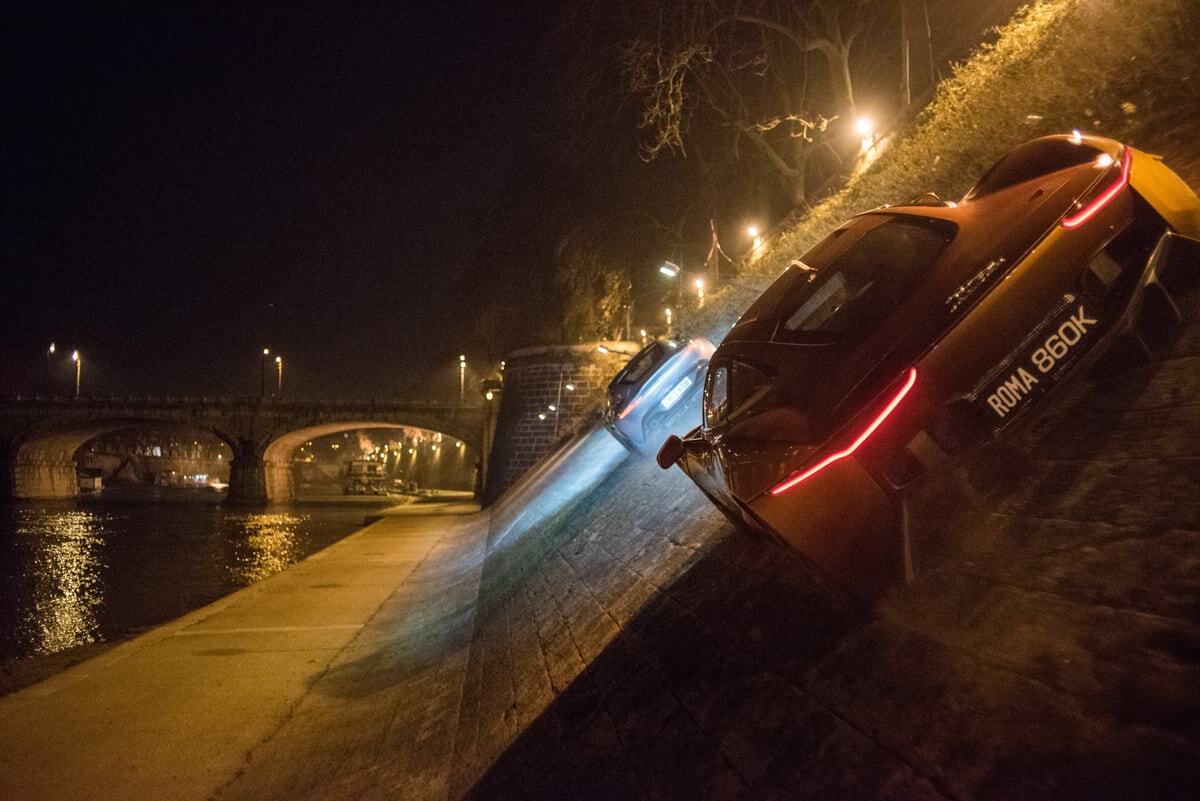
No Time To Die (2021): Matera and Puglia
After an initial flashback, No Time To Die opens with Bond (Craig) driving a classy Aston Martin DB5 with a scenic view by the Mediterranean sea, shot between Acquafredda and Sapri in the Basilicata region. It’s there that our agent reaches Matera, a city carved into rock, and where the action is set for the first part of the movie. In the calm before the storm, Bond and Madeleine (Léa Seydoux) stroll down Via Muro with stunning shots of the ancient city. Most of the following scenes, however, were actually shot in the town of Gravina di Puglia, which, as the name suggests, is located in the nearby region of Puglia. After visiting Vesper’s tomb, Bond is chased by a villain in a motorcycle, running on foot over the Madonna Della Stella Aqueduct–built in the 17th century by a local noble family to allow business between the city and the local farmers–off which Bond daringly launches himself to escape. The following car chase, which interrupts more than a flock of sheep, returns to Matera, accelerating through the city’s streets and ending with a shoot out at Piazza San Pietro Caveoso.
No Time To Die is not the only movie set in Matera, which has been a filming location for at least 14 other movies, including international blockbusters like Ben-Hur (1954), Mel Gibson’s The Passion of Christ (2004) and Wonder Woman (2017), as well as Italian classics like Pier Paolo Pasolini’s Il Vangelo Secondo Matteo (1964), Cristo si è fermato a Eboli (1979) and L’uomo delle stelle (1995).

BONUS: IAN FLEMING IN VENICE
“Then came the unfailing shock of the beauty that never betrays,”
–Ian Fleming
Where does James Bond’s love for Venice come from? Ian Fleming himself, the writer and mastermind behind the 007 saga, was a big fan of the Italian city. By the end of the 1950s, Ian Fleming was a successful writer and an “adventure” reporter for The Sunday Times. In 1958, he went to the Seychelles in the search of 120 million pounds of treasure, supposedly hidden there by the French pirate Levasseur. Instead of riches, Fleming left with coral poisoning and met his wife Anne for a family holiday to Venice. To recover from the injury, Fleming booked their room at the Gritti Palace Hotel, a spot with one of the finest views of the Laguna in all of Venice. There, the couple would spend each morning looking for a church or a museum where Anne could enjoy the art, while Fleming would settle with a newspaper and a coffee in the nearest bar or cafeteria. It was during these mornings that Fleming wrote “Risico”, one of the five short stories Fleming published in the book For Your Eyes Only (1960), in which Bond is asked to investigate a drug-smuggling operation based in London via Venice. Fleming was a great admirer of Thomas Mann’s novel Death In Venice, which was mostly based on the Lido; Fleming and his wife visited the island to study the locations used for “Risico”. Apropos of Mann’s novel, Anne Fleming said, “Once I had read it, I understood for the first time the sad nostalgic beauty of Venice and realised that this was how Ian [Fleming] saw the city and why he loved it.”
Fleming, like Bond does in “Risico”, must have had several tipples at the most prestigious cocktail bars in the city:
“That evening, scattering thousand-lira notes like leaves in Vallombrosa, James Bond sought, at Harry’s Bar, at Florian’s, and finally upstairs in the admirable Quadri, to establish to anyone who might be interested that he was what he had wished to appear to the girl–a prosperous writer who lived high and well. Then, in the temporary state of euphoria that a first night in Venice engenders, however high and serious the purpose of the visitor, James Bond walked back to the Gritti and had eight hours of dreamless sleep.”
Fleming clearly appreciated the joys of travelling off-season, writing in the short story that “May and October are the best months in Venice” because “the sun is soft and the nights are cool… The glittering scene is kinder to the eyes and there’s a freshness in the air that helps one to hammer out those long milestones and terrazza and marble that are intolerable to the feet in summer.”
Thanks to this trip to Venice (and a second one in 1962), Fleming certainly held onto the floating city, a place where James Bond comes back several times, mostly for love–Venice is, after all, the perfect place for it.
